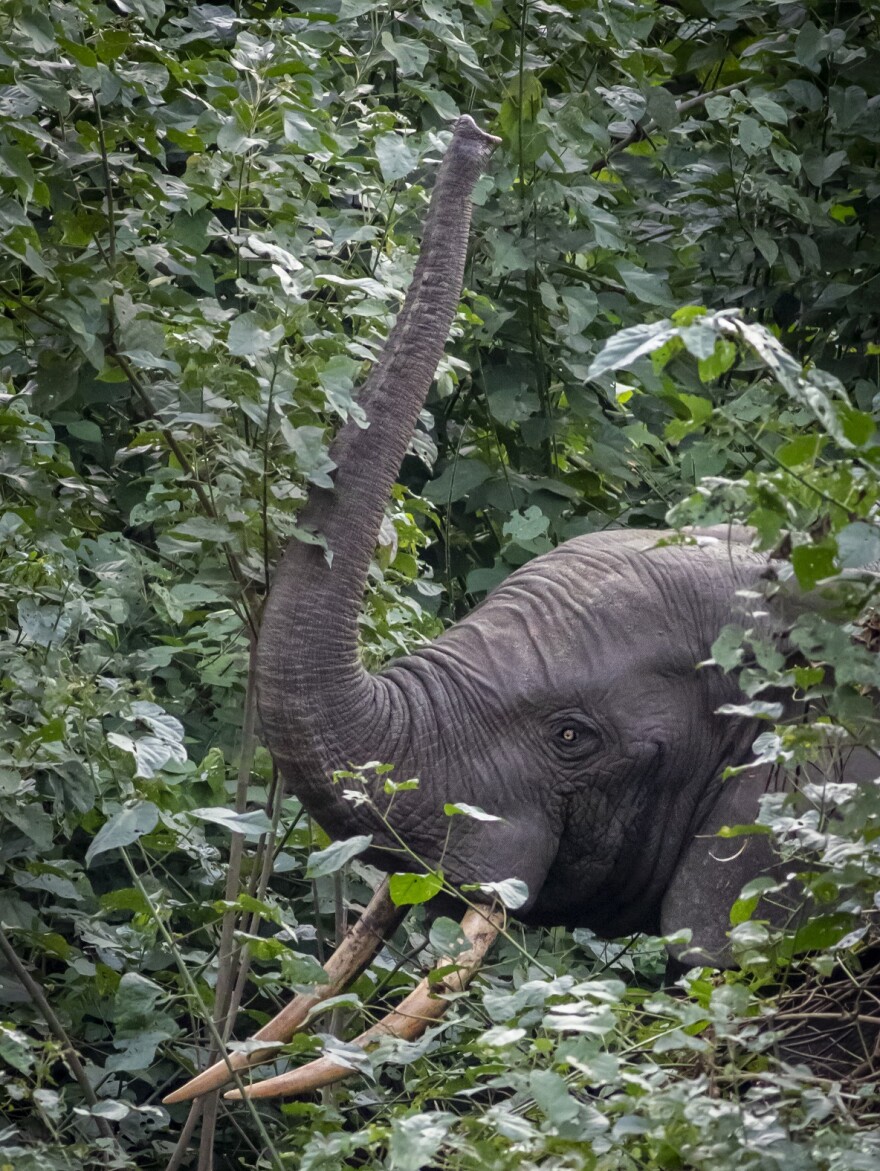
Critically endangered African forest elephants in the Congo Basin play a key role in creating forests, which in turn, store carbon and maintain the biodiversity of African rainforests.
“By their foraging habits, their long distance movements and dispersal of seeds, they garden the forest in ways that are beneficial not only for biodiversity, but also for carbon sequestration — for taking carbon out of the atmosphere,” said Stephen Blake, an associate professor of biology at St. Louis University. Blake’s work was published in the Proceedings of the National Academy of Science last month.
“If we keep elephants alive, and we maintain forests with elephants in them, they have a positive impact on our ability to mitigate carbon dioxide pollution,” he said.
African elephants, however, face grave threats from poachers in the illegal ivory trade who harvest elephant tusks and teeth.
“We have an expanding growing population of poor forest dwellers in Central Africa that need food to feed their families. We have an increasing wealthy population of people that potentially want to buy and like ivory, and we have more and more extensive trade systems between Africa and Asia —routes in which illegal smuggling operations can happen,” Blake said. “Those increasing trade routes mean that forest elephants, in particular, are ever more threatened from population loss and potential extinction.”
If African forest elephants become extinct, the second-largest rainforest in the world would lose between 6% and 9% of its ability to capture atmospheric carbon, negatively affecting the Earth’s climate.

Blake sees reason for hope in the fact that the Congo Basin now has about 30 national parks, meaning the elephants in those habitats experience some legal protection. Also, Blake said his recent paper, and similar ones published by his colleagues, have caught the attention of organizations like the International Monetary Fund and the World Bank, which report increasing interest in curbing greenhouse gas emissions.
Now, he said, they think “about elephants and forests in a different way to which they had previously: ‘If we keep elephants alive, and we maintain forests with elephants in them, they have a positive impact on our ability to mitigate carbon dioxide pollution.’”
Blake joined Friday’s St. Louis on the Air to discuss the relationship between African forest elephants and atmospheric carbon. To hear more, listen to St. Louis on the Air on Apple Podcast, Spotify, Google Podcast, Stitcher, or by clicking the play button below.
“St. Louis on the Air” brings you the stories of St. Louis and the people who live, work and create in our region. The show is produced by Miya Norfleet, Emily Woodbury, Danny Wicentowski, Elaine Cha and Alex Heuer. Avery Rogers is our production assistant. The audio engineer is Aaron Doerr. Send questions and comments about this story to talk@stlpr.org.






